Well in the area - theoretical and practical knowledge
With all its popularity, the autonomous supply of water to country houses in our time raises a lot of questions among beginning construction workers. There are all sorts of problems associated not only with the technical part of the process, but also with the documentation. We will try to answer the most frequently asked of them in this article.
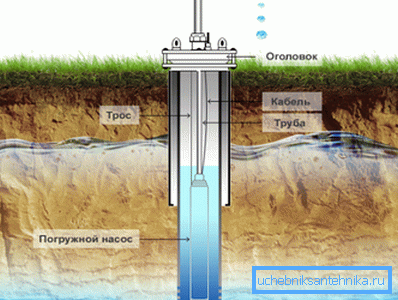
Licensing and approval
The first question, anticipating the planning of water supply for a house remote from an urban civilization with its amenities is what permits are necessary for a well on the site. The RF Law “On Subsoil” and numerous decrees and orders regulate the procedure for obtaining permits for the extraction of groundwater.
The exception to the rule is the extraction of water by the owner of the land within its limits from the first aquifer, provided that the latter does not participate in the central water supply as a source.
In human terms:
- Shallow wells (sand) on the first aquifer can be drilled and exploited without additional approvals.
- Artesian wells are subject to mandatory licensing.
Note! When attracting specialists to drilling a well, ask if the contractor has a license and permission to carry out drilling operations. Also do not forget to get the warranty documents for the finished well.
Cost part
The second most important question for the owners is how much it costs to make a well on the site. There is no definite answer.
The total cost of the well on the site consists of several articles:
- The cost of directly drilling at the site.
- The price of all necessary equipment and devices.
- Expenses at the licensing stage.
Drilling costs are quite high (from 2000rub / meter), especially when it comes to the installation of a deep artesian well involving heavy drilling equipment.
It is possible to achieve tangible discounts if the contractor is to entrust the whole range of works:
- Well drilling.
- Her immediate equipment.
- Caisson device.
- Laying and input of necessary communications in the house, in economic construction.
In any case, the money will be considerable, so you can significantly reduce the cost of well construction by doing all the work available to you with your own hands.
Tip! It is not recommended to save on materials and well equipment unless it is within reasonable limits, since, ultimately, this ghost saving can be a source of additional costs.
Well device
Any work begins with the planning and creation of an autonomous water supply system for a country or country house is no exception. One of the fundamental stages of this process is the location of the water source.
Selection of the drilling site
When designing a well on your land plot, two points should be taken into account:
- Sufficient well removal from potential sources of pollution and other objects.
- Location of aquifers.
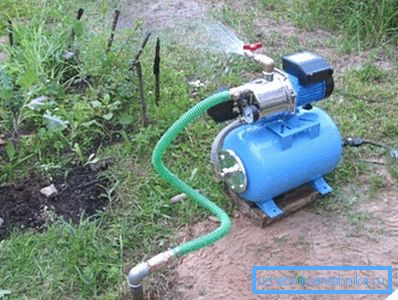
As for the first point, these parameters are clearly regulated by the relevant documents, including SanPiN (sanitary rules and regulations) on the protection of water sources and the SNiP “Water supply. External networks and facilities.
The main sources of contamination of well water can be placed in the wrong place:
- Central sewage.
- Cesspit.
- Septic tank - for water purification.
There is such a thing as a sanitary protection zone for wastewater systems. It is within this zone that it is not worth drilling a well.
Here are the values of security zones relative to various objects:

- 30m from possible sources of pollution in the absence of a hydraulic connection between the soils through which the sewers are filtered and the aquifer of the well.
- 50m in the event of insect aquifers from filtrates.
- Not less than 30 m from the low pressure pipeline.
- 100 m from the main gas pipeline (high pressure).
Note! Strange as it may sound, a well located nearby may also pose a risk of water pollution in the well, due to its design. The walls of the well are not tight and, trapped in the open well of pollution, can penetrate through the soil into the waters of the reservoir, in which the well is drilled.
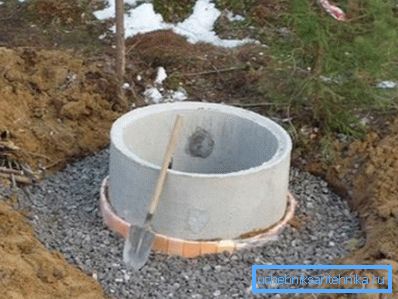
As for building structures, it is not recommended to drill a well closer than 1 meter from the erected foundation of a building. It is obvious that the well should be located in the place of the site where the best access will be provided to it, since the well requires periodic maintenance.
Do it yourself
In conclusion, we analyze how to make a well on the site independently, without the involvement of professionals. It is not as difficult as it seems at first glance, in the case when the aquifer is shallow up to 5-6 m deep, then it is possible to do with a garden drill for drilling.
The deeper well in the garden plot is drilled with:
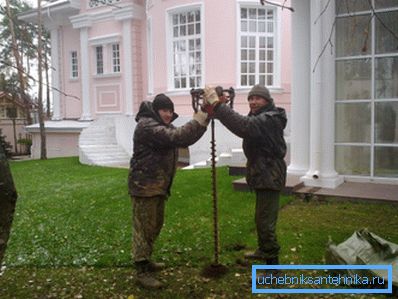
- Ancillary equipment (tripod, winch plus a set of rods).
- Compact drilling equipment industrial production.
The well device is divided into several stages:
- Drilling a well is the insertion of a drill into the soil with periodic lifting to remove soil from the blades. As we go deeper, we begin the installation of casing (walls of a future well). The bottom of the well should be equipped with a filter to prevent mechanical impurities from entering the water and comfortable pump operation.
- The finished well is equipped with a pump, preferably centrifugal. In shallow wells up to 8m it is possible to use surface pumps, at a greater depth exclusively submersible deep-seated units.
- The third stage is the design of the wellhead, that is, its practically hermetic closure. To do this, you can use the finished products or make it yourself.
As for how to close a well in the area - this is a separate conversation. Here, at a minimum, care must be taken to insulate the equipment and seal all elements under voltage.
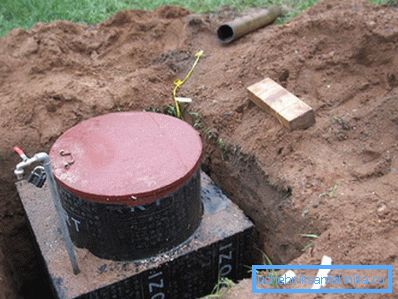
Conclusion
Now you are “grounded” in the question of installing a well in your suburban area, the above information will help you learn the basics of this process. If you doubt your abilities, it is better, of course, to turn to hired workers, the main thing is not to save on this, since cheap labor does not guarantee a positive result (find out here how to make a filter for a well).
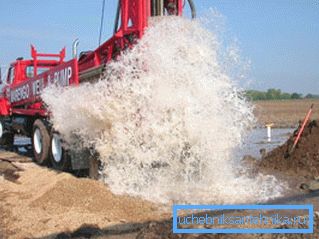
In the presented video in this article you will find additional information on this topic.